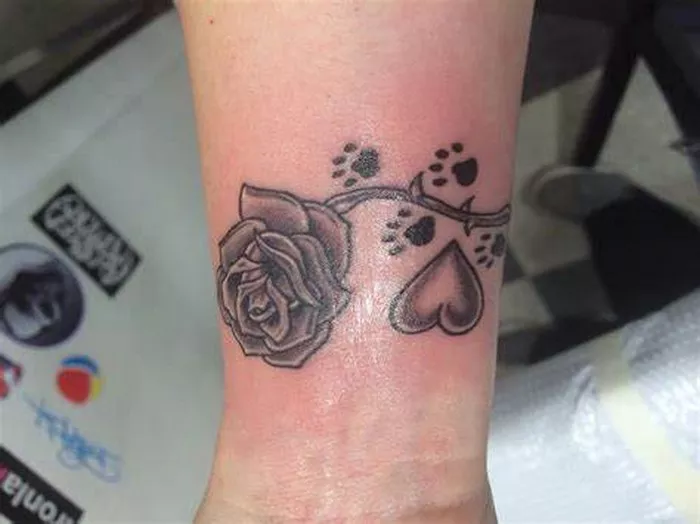Tattoos have long been a symbol of self-expression, creativity, and personal identity. As the popularity of tattoos continues to soar, more and more individuals are seeking to adorn their bodies with meaningful designs. Among the various body parts chosen for tattoo placement, the wrist stands out as a particularly popular location due to its visibility and versatility. However, before committing to a wrist tattoo, it’s crucial to consider the potential pain involved in the process.
Exploring the Sensitivity of the Wrist Area
The wrist is renowned for its delicate nature, characterized by a relatively thin layer of skin and numerous nerve endings close to the surface. This unique anatomical structure makes the wrist one of the more sensitive areas of the body, particularly when it comes to receiving tattoos. The pain experienced during a tattoo session can vary significantly from person to person and depends on several factors, including individual pain tolerance, the design’s complexity, and the skill of the tattoo artist.
Factors Influencing Pain Perception
1. Individual Pain Threshold:
One of the most significant factors influencing the pain experienced during a wrist tattoo is an individual’s pain threshold. Pain tolerance varies greatly among people, with some individuals able to withstand discomfort more easily than others. Factors such as genetics, previous experiences with pain, and psychological factors can all play a role in determining an individual’s pain threshold.
2. Design Complexity and Size:
The complexity and size of the tattoo design also contribute to the overall pain level experienced during the tattooing process. Intricate designs or those requiring shading and intricate linework may necessitate longer tattoo sessions, increasing the duration of discomfort. Similarly, larger tattoos cover more surface area and may result in prolonged sensations of pain and discomfort.
3. Artist Technique and Experience:
The skill and experience of the tattoo artist are crucial factors in minimizing pain and ensuring a smooth tattooing process. Experienced artists are adept at controlling needle depth, adjusting pressure, and managing the pace of the tattoo session to minimize discomfort for their clients. Choosing a reputable and skilled tattoo artist can significantly impact the overall pain experience during a wrist tattoo.
Understanding the Tattooing Process
Before delving into the specifics of pain levels, it’s essential to understand the tattooing process itself. Tattooing involves the insertion of ink into the skin’s dermal layer using a needle attached to a tattoo machine. The needle penetrates the skin multiple times per second, depositing ink and creating the desired design.
See Also: Which Tattoo is Lucky for Gemini: A Beginner’s Guide
Pain Management Techniques
While getting a tattoo on the wrist can be uncomfortable, several pain management techniques can help alleviate discomfort during the process:
1. Topical Anesthetics:
Topical anesthetics, such as numbing creams or sprays, can be applied to the skin before the tattooing session to reduce pain and discomfort. These products work by temporarily desensitizing the skin, making the tattooing process more tolerable.
2. Distraction Techniques:
Engaging in distraction techniques, such as listening to music, watching a movie, or chatting with the tattoo artist, can help take your mind off the pain during the tattooing process. Focusing on something other than the sensation of the needle can help reduce perceived discomfort.
3. Deep Breathing:
Practicing deep breathing exercises during the tattooing session can help relax the body and alleviate tension, making the experience more bearable. Deep breathing techniques, such as inhaling deeply through the nose and exhaling slowly through the mouth, can help calm nerves and reduce pain perception.
4. Pain Relievers:
Over-the-counter pain relievers, such as ibuprofen or acetaminophen, can help manage discomfort before and after the tattooing session. However, it’s essential to consult with a healthcare professional before taking any medication to ensure it’s safe for you.
Conclusion
Getting a tattoo on the wrist can be a meaningful and rewarding experience for many individuals. However, it’s essential to be aware of the potential pain involved in the process and take steps to minimize discomfort. By understanding the factors influencing pain perception, employing pain management techniques, and choosing a skilled tattoo artist, you can make the tattooing process more comfortable and enjoyable. Remember, while pain is a part of the tattooing experience, the end result – a beautiful and meaningful piece of body art – is often well worth it.

